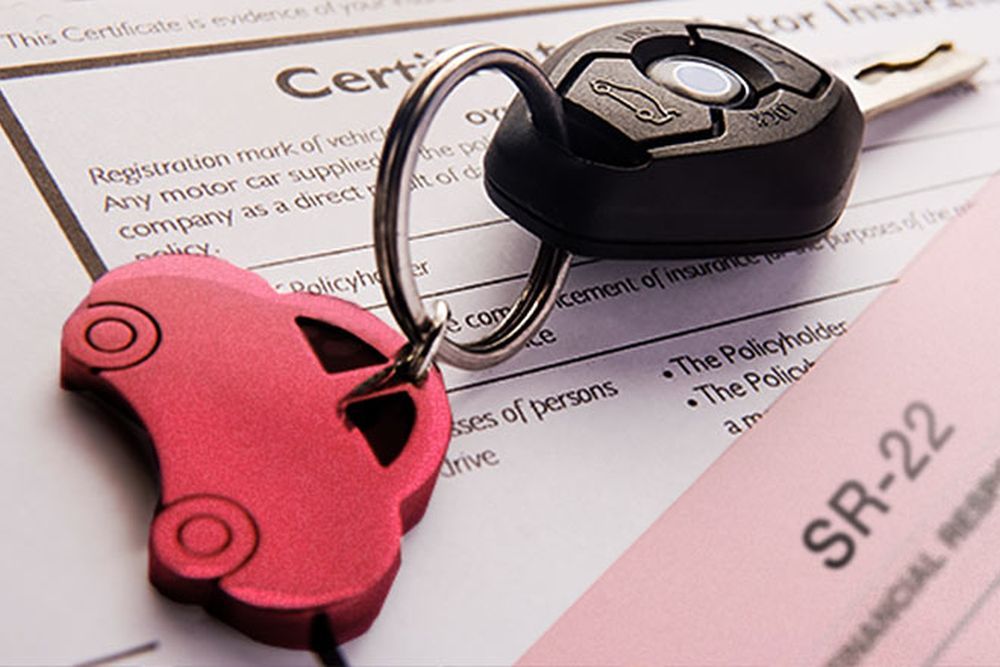Uncovering the Unspoken Benefits of Auto Insurance
Auto insurance provides financial protection in the event of a covered collision. But did you know that reliable auto insurance offers a variety of advantages that you may not be aware of? From more peace of mind to more protection on the road, read on to learn more about the unspoken benefits of auto insurance.
Firstly, auto insurance can help you prepare for the unexpected. Whether you get into an accident, suffer property damage, or your vehicle is stolen, your coverage pays and helps cushion the financial aftermath. By having the right coverage, youll be much better prepared to handle any situation that may come up.
Secondly, auto insurance often gives you access to special discounts. If you have more than one car insured with the same company, you can take advantage of multi-vehicle discounts. If you happen to have a clean driving record, then you may even be eligible for a safe driver discount.
Thirdly, having car insurance can make it easier to rent a car. When you’re traveling, going on vacation, or renting for another purpose, rental companies typically require evidence of coverage before handing over the keys. So, having auto insurance can help make sure you don’t have to worry about finding affordable coverage when you’re on the go.
Fourthly, auto insurance coverage can often be bundled with other types of insurance, such as homeowners or renters. Bundling multiple lines of coverage with the same company can save you money and simplify managing your financial protection.
Fifthly, having a good auto insurance policy can provide peace of mind. Knowing that you’re protected can make it easier to enjoy the open roads and the freedom your car provides. It’s like an invisible backseat driver that’s with you wherever you go.
Finally, if you take part in an accident, auto insurance can help you shoulder the costs. This could be anything from medical bills to legal fees to car-rentals costs and more. Just remember, it’s always important to double-check your policy beforehand so you know what kind of protection you have on the road.
Uncovering the Unspoken Benefits of Home Insurance
When it comes to protecting yourself and your loved ones, auto insurance isnt the only option. Home insurance can provide that extra layer of financial security to help keep your home and its contents safe in the event of a covered peril. But there are more subtle advantages to owning this coverage that you might not know about.
Firstly, good home insurance can help you in the event of a fire. Fires can spread quickly, resulting in property damage and even injury. With the right coverage, you wont have to worry about how youll recover. Home insurance also helps with coping with liability issues if someone gets injured on your property.
Secondly, home insurance can help you pay for temporary living costs if youre forced out of your home due to an incident. If your residence is uninhabitable while repairs or renovations are taking place, you can receive compensation for a hotel or other temporary living costs.
Thirdly, you can bundle home insurance with your auto insurance to save money. Much like auto insurance, bundling multiple policies together can get you discounts and simplify your overall financial protection.
Fourthly, home insurance helps mitigate the costs associated with natural disasters. You may have coverage to help you repair or replace damaged items or cover building repairs, depending on the policy.
Fifthly, having a good home insurance policy provides the assurance that, in the event of an unexpected event, you wont have to worry about expenses. Having the right coverage lets you have peace of mind, knowing your home and its contents are in good hands.
Finally, home insurance allows you to cover the value of your belongings. This can include your essential items such as furniture, electronics, appliances, and other personal property. Depending on the policy, you may also be able to cover jewelry and other high-value items.
Uncovering the Unspoken Benefits of Doing Regular Car Maintenance
Regular car maintenance is often overlooked when it comes to keeping a vehicle in great condition, but taking the time to perform regular checks can help you save money and time in the long run. Whether its an oil change, tire rotation, or system fix, doing regular car maintenance can reduce the risk of costly breakdowns and keep you safe on the road.
Firstly, regular car maintenance helps keep your vehicle running at its best. By doing regular checks and scheduled services, its less likely that any emergencies will occur. Plus, having a well-maintained car can help increase its resale value and make it more appealing to potential buyers.
Secondly, regular car maintenance can increase your cars reliability and increase its fuel efficiency. This means that youre less likely to get stranded on the side of the road and youll be able to make fewer trips to the gas station.
Thirdly, regular car maintenance can help you avoid expensive parts replacements. Having regular checkups can help detect any potential signs of wear and tear so that they can be fixed, saving you hundreds of dollars in potential repair costs.
Fourthly, car maintenance can keep you safe on the roads. Without regular check-ups, youre unlikely to know if there are any components that need to be replaced, or any looming safety concerns that could endanger your passengers and other road users.
Fifthly, regular car maintenance keeps your car looking and sounding its best. From squeaking brakes to rusting paint, these little issues can detract from your cars aesthetic and make it less enjoyable to drive.
Finally, if youre part of a managed fleet, regular car maintenance can help ensure that your fleet remains in good condition and that you get maximum value from each vehicle. Plus, having a regular maintenance schedule makes it easier to budget and plan for future repairs.
Uncovering the Unspoken Benefits of Having Your Car Professionally Detailed
While most drivers will know the basic necessities for keeping a car clean, few know the benefits that come with having it professionally detailed. By taking the time to have the interior and exterior of your car be professionally detailed, you can keep your car looking its best and ride in style with pride.
Firstly, professional car detailing ensures that your vehicle is correct sanitized. Its not just about making your car look good, its also about ensuring that its safe and free of potentially hazardous germs and bacteria.
Secondly, professional car detailing can help protect the exterior of your car and prevent scratches from accumulating. Many detailing companies use protective coatings to give cars additional protection against the elements.
Thirdly, a professional detailing can make your car look like new again. From waxes to upholstery shampooing to removing minor scratches, car detailing can restore the visual appeal of your car, making its interior and exterior look like it just drove off the lot.
Fourthly, a professional detailer may be able to locate and identify any issues that may have been overlooked. From corrosion to minor paint imperfections, spotting these issues can help you avoid costly repairs further down the line.
Fifthly, a professional detailer can apply sealant coatings to help protect your paint. By having your car professionally detailed, you can protect the paint job from environmental damage, such as UV rays, which can fade the color, or acidic contaminants, like bird droppings, which can harm the paint.
Finally, detailing helps your car feel like your own. By having your car professionally detailed, you can rest assured that youre doing the best you can to keep your car looking its best and functioning at its peak. Plus, its a great way to give yourself a confidence boost.
Uncovering the Unspoken Benefits of Doing Regular Boat Maintenance
When it comes to owning a boat, much like a car, regularly performing boat maintenance can help you get the most out of your vessel. From ensuring its integrity to preventing costly breakdowns, boat maintenance should never be something you overlook.
Firstly, boat maintenance can help you keep your investment safe and sound. By performing routine maintenance, you can minimize the risk of any unfortunate surprises or disasters, such as a damaged propeller or leaky fuel tank. Its better to be proactive in addressing small maintenance issues than having to make major repairs.
Secondly, boat maintenance helps prevent environmental damage. Small issues, such as a leaky exhaust system or broken fuel pumps, could have the potential to damage the environment if not addressed in a timely manner. Taking the time to have your boat regularly serviced can help prevent any pollutants or hazardous materials from seeping into the water.
Thirdly, performing routine maintenance keeps you and your passengers safe. From fixing loose wiring to checking vital safety components, boat maintenance can help mitigate the risk of accidents or injuries while youre out at sea.
Fourthly, doing boat maintenance keeps your boat running at its best. Regular checkups of its engine and other components can help the boat stay at peak performance, ensuring that your engine runs more efficiently and lasts longer.
Fifthly, boat maintenance ensures you get the most out of its performance. Having your boat regularly serviced can reduce wear and tear on its components, resulting in improved handling and more power.
Finally, performing boat maintenance can make your boat more desirable for future owners. When it comes time to resell your boat, a well-maintained unit will appeal to more prospective buyers than a boat with a poorly maintained engine and hull, and its perceived value will be higher.
Uncovering the Unspoken Benefits of Boat Insurance
Having boat insurance is a great way to safeguard your financial assets from any kind of maritime injuries or accidents. But, there are other advantages to boat insurance that you might not be aware of. Here are some of the unspoken benefits of boat insurance.
Firstly, having boat insurance can help you pay for unanticipated costs. From injury costs to third-party liability, boat insurance provides financial protection in the event of an unexpected or costly incident. Plus, you can also get coverage for your boats personal effects and equipment.
Secondly, boat insurance is often more affordable than you might think. Depending on the type and size of your vessel, you can usually get coverage at a low cost, giving you greater financial security without breaking the bank.
Thirdly, boat insurance usually includes coverage for gear and equipment. If youre an avid entertainer and host regular boating parties, having insurance can be invaluable if your gear ever gets stolen or damaged. Plus, youll be covered in the event of any injuries that occur.
Fourthly, boat insurance gives you peace of mind. Knowing that if anything happens, youll be covered, can make the boating experience much more enjoyable and enjoyable and allow you to take more risks out on the water.
Fifthly, having good boat insurance can make it easier to secure a loan to purchase a vessel. If youre taking out a loan, most lenders typically require proof of insurance before providing funds.
Finally, boat insurance can also help you cover your boats value. Having insurance with aground value coverage will help you to save on costs and repairs to fix or replace any damaged items.










